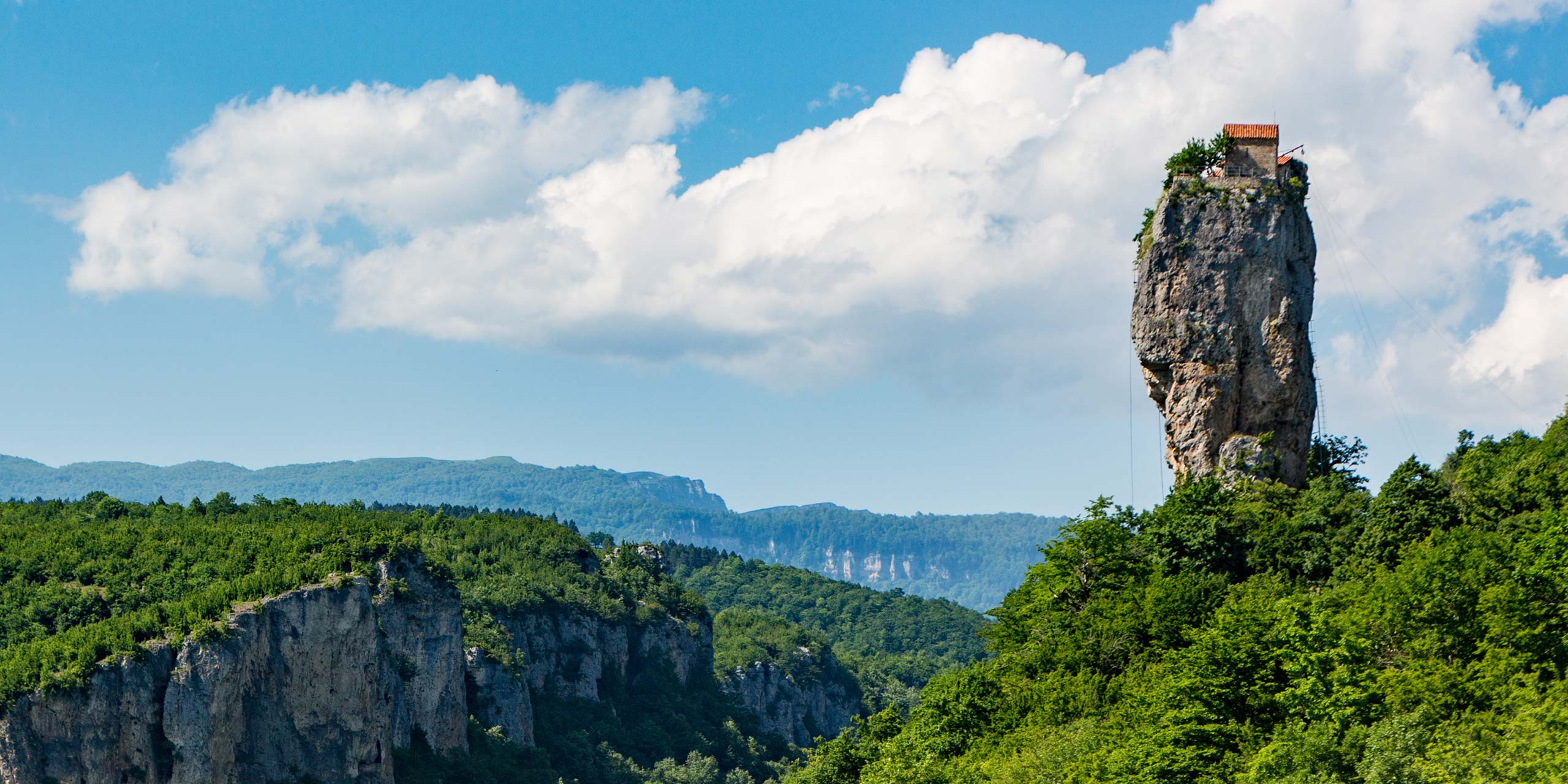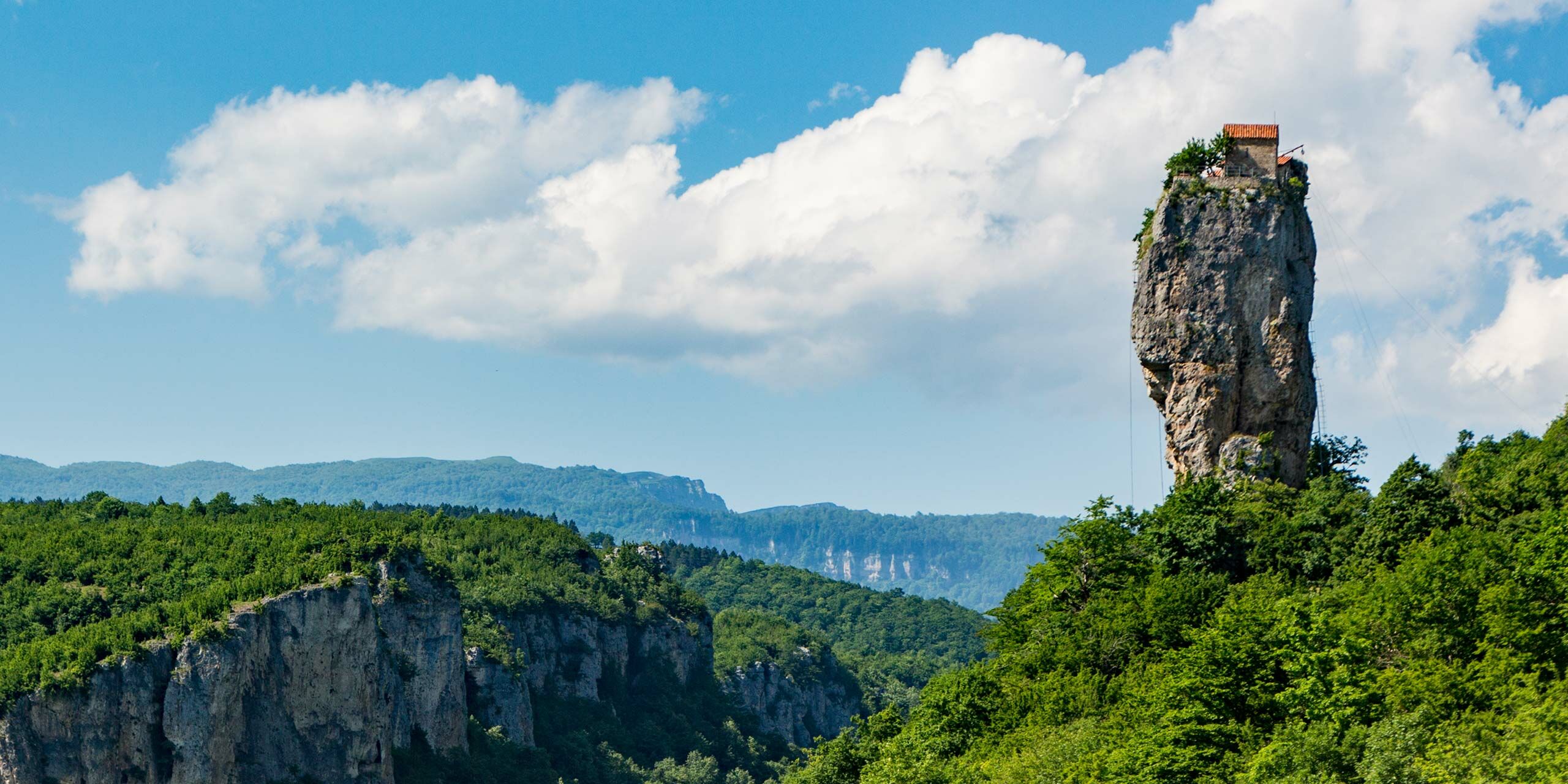
Georgia is a very special place and the architecture can seem both quaint and imposing. But, in the case of the Katskhi Pillar, it seems properly otherworldly. The usual questions of who, where, when, and how pop into the mind upon first seeing the millenia-old Katskhi Pillar, but the first question is inevitably “huh?”
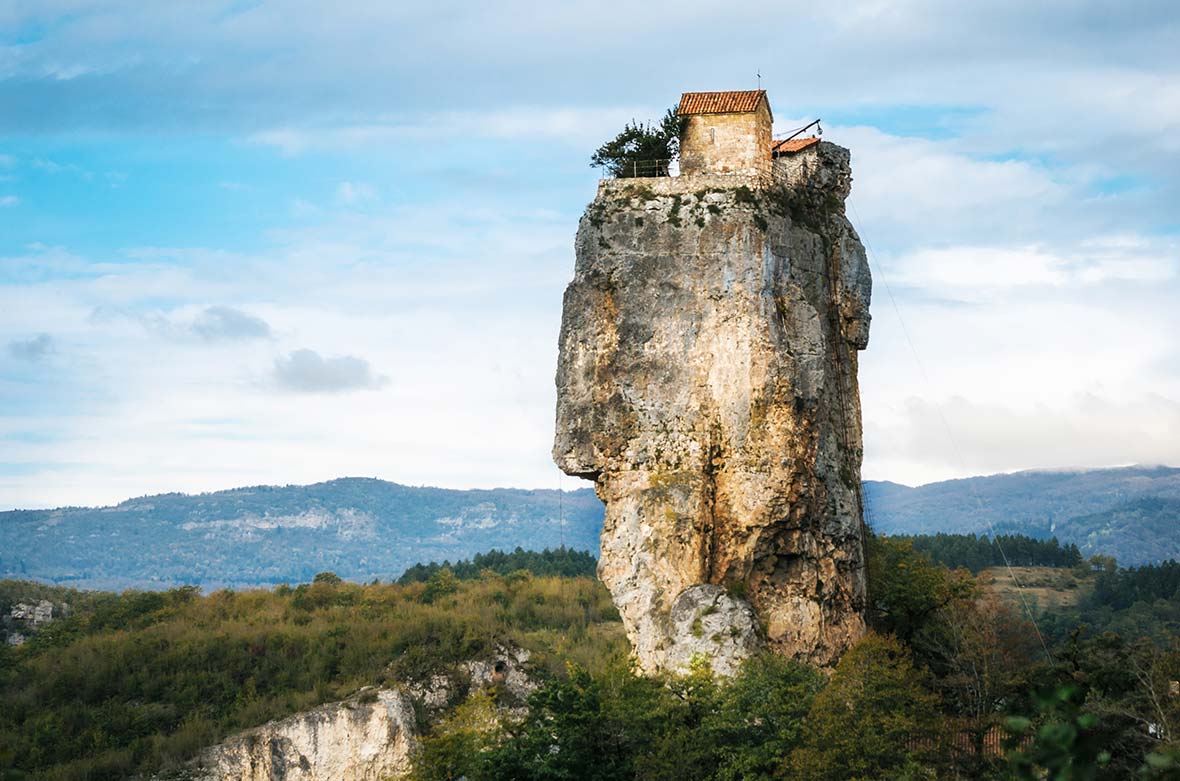
Yes, there is a magnificently beautiful limestone pillar jutting out of a forested landscape in the small country of Georgia — a curious little bright nubbin that wouldn’t seem out of place in the Andaman Sea, compared perhaps to Thailand’s famous James Bond Island. But, with a twist: There’s a whopping great church ruins on top of it. Though only recently the subject of research, the Katskhi pillar has been the subject of wonder for quite some time, perhaps today one of the most recognizable images of central Georgia.
After traveling 200 kilometers from the capital of Tbilisi, travelers make the last bit of the journey on foot with a 20-minute hike for the first view of this monument to early Christain worship: a 40-meter tall monument to human endeavor.
Why?
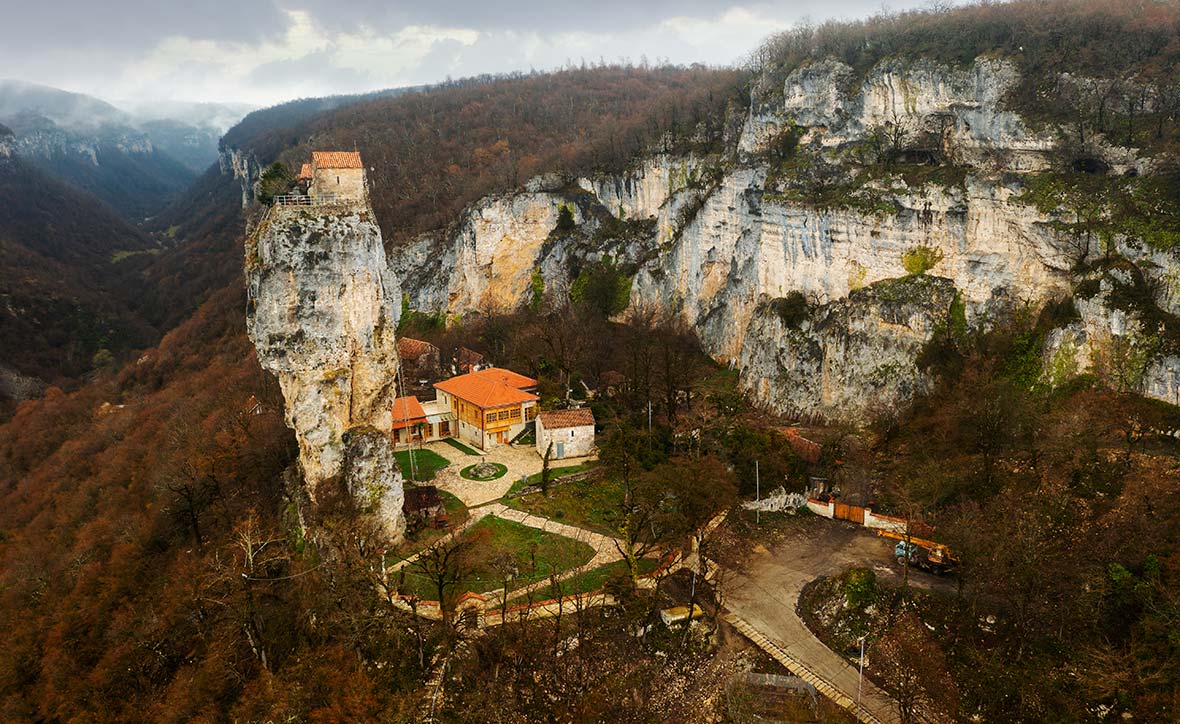
Why might someone build a church atop a pillar in one of the harder to reach areas of the intersection of Europe and Asia? There was a popular style of worship particular to Europe that over the last 1,000 years or so has since, largely, fallen out of style: stylites. These dedicated Christian teachers would shimmy up a pole or column to preach and fast, free from the Earthly delights of the ground and of their own bodies. Today, a church to the eponymous Simeon Stylites sits at the foot of the Katskhi Pillar.
Some have put forward the unlikely theory the church was built there to protect from the invading Ottomans, but the fact is that places of worship in unlikely, isolated places is a feature of many religious worshippers — from the monasteries of Mustang to the cliffside churches of Ethiopia. Georgia, due to its geography and relative isolation, is home to a number of structures from the early centuries of Christianity
When?
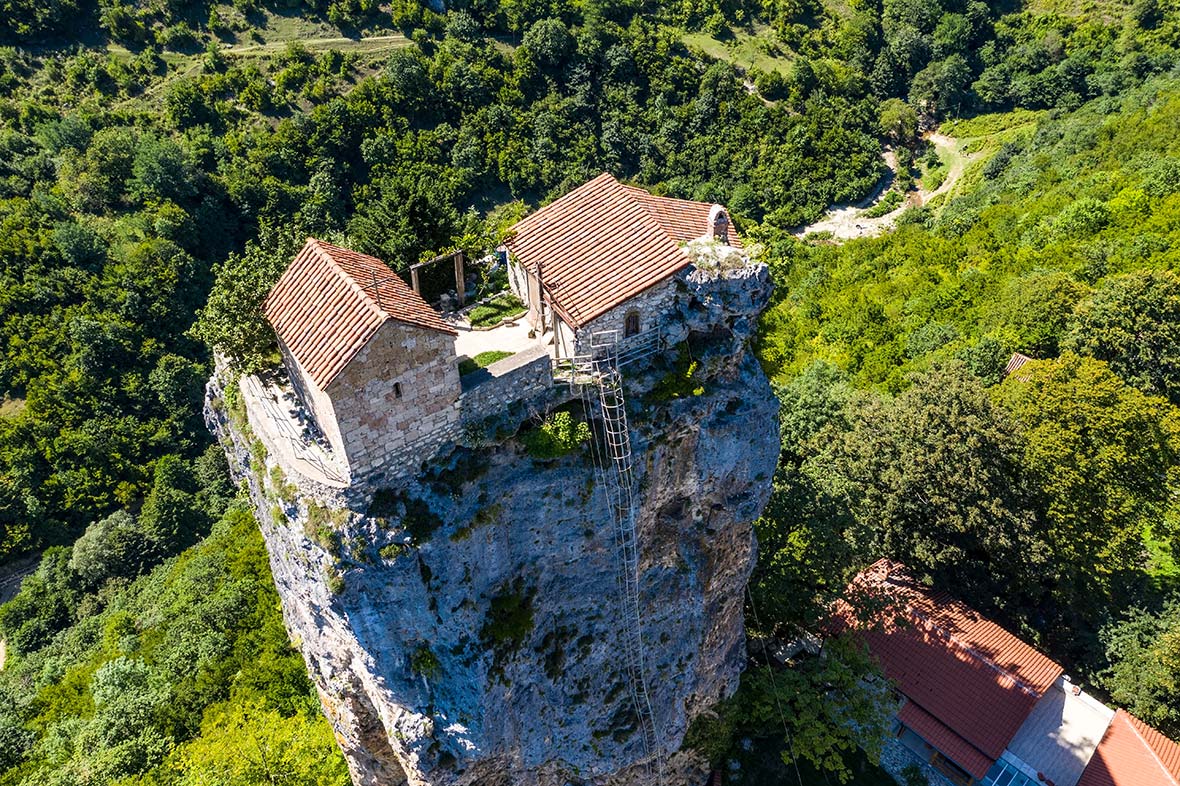
This, admittedly, is pretty tricky. No one in the modern world really knew much at all about the Katskhi Pillar until it was finally climbed in 1944 by mountaineer Alexander Japaridze and the writer Levan Gotua. It was later determined to have been built in the 5th or 6th century, but other studies have concluded the actual date of construction is around the 9th and 10th centuries.
Who?
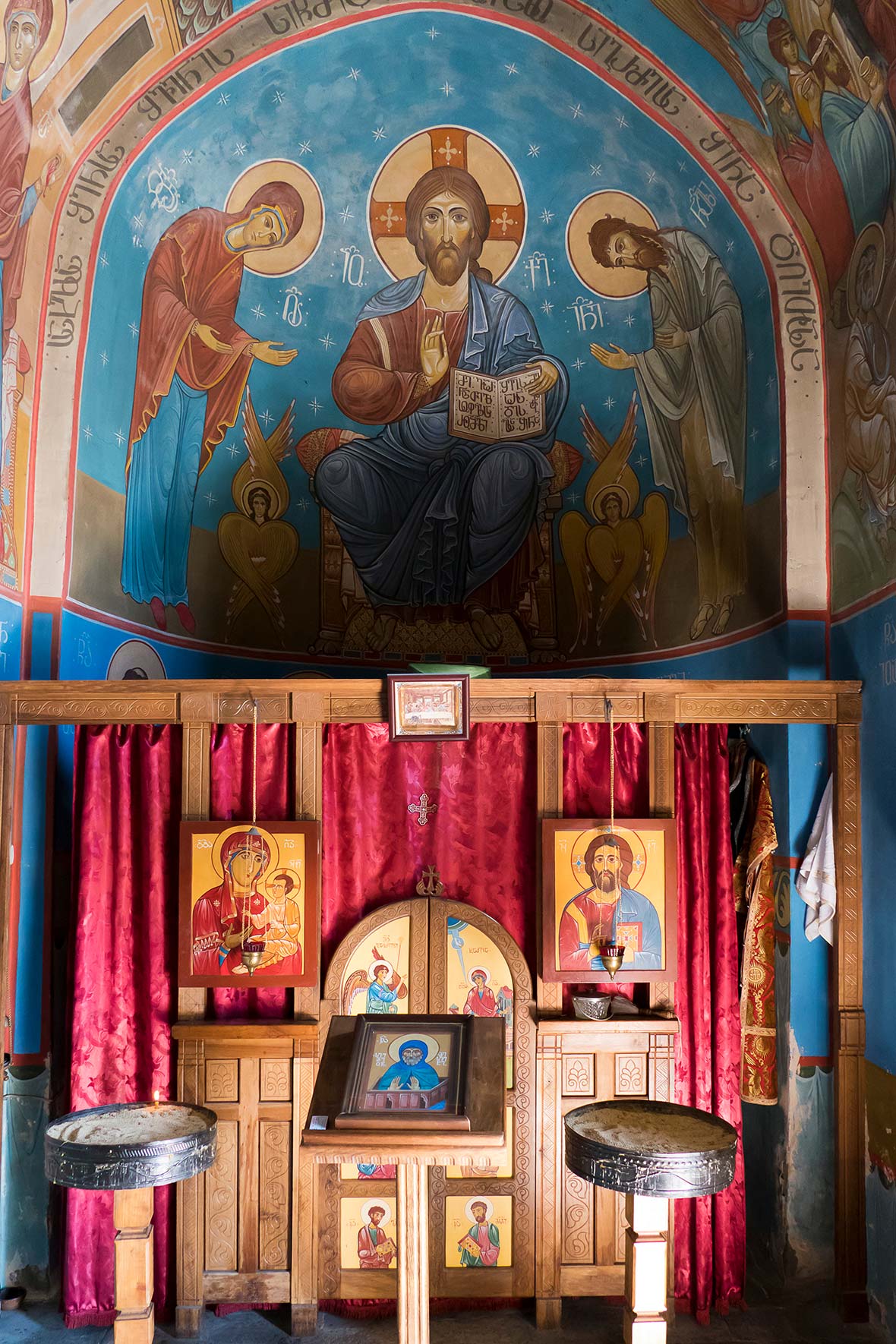
The Katskhi Pillar may be a 1,000 year old mystery, but it hasn’t been a mystery for a thousand years. Evidence has been found that Christian aesthetics used the church for worship more than 300 years after its construction, serving dedicated worshippers for at least three centuries and necessitating the construction of more recent hermitages built by someone named “Giorgi”. However, for many centuries afterward, locals would simply stare up in wonder.
Monks still make the ascent to pray and up until 2015 it was inhabited by Father Maxime Qavtaradze, who would make the 13-minute climb down to preach to the faithful. The holy man stayed up there for more than two decades, relying largely on donations hoisted up via pulley.
Can I Climb It?
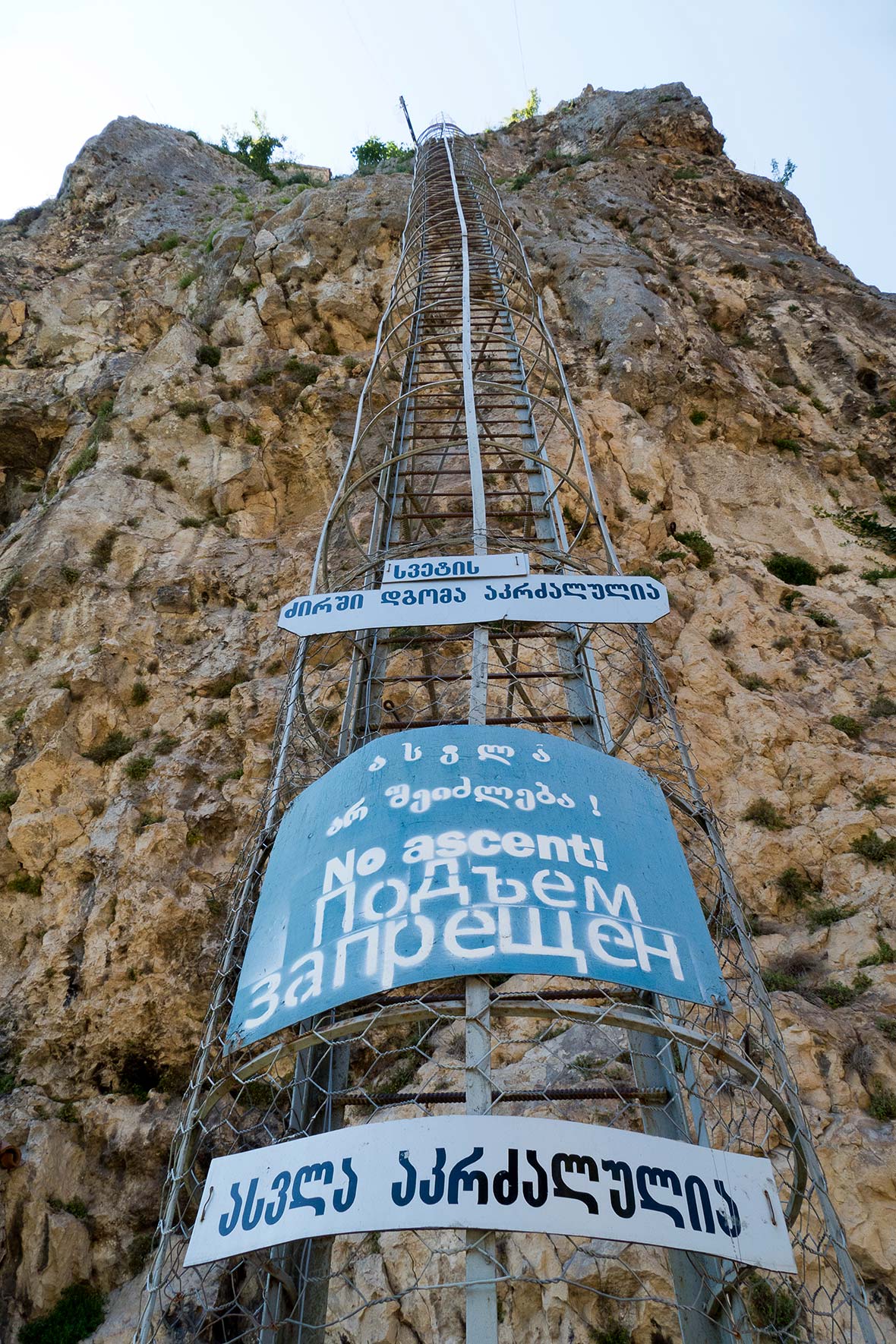
If you are a male local Georgian monk who spends about seven hours a day in prayer, then yes, of course, go for it. If not, it’s a no. This is sacred ground: sacred to the Georgians who have admired it in wonder for hundreds of years, sacred to the monks who climb to pray, and sacred to those who come in search of guidance. So, maybe put the selfie stick away and think about your place in the universe for a hot minute.
Still there is much to see in the adjoining complex and of course being inspired by the sight itself. Regular visitors can still climb some of the pillar to pray at a 6th century cross marked into the limestone, one of the oldest surviving pieces of Christian art in Eastern Europe. Guests can also, respectfully, visit the inside the quaint Church of Simeon Stylites, filled with frescos and religious artifacts.

